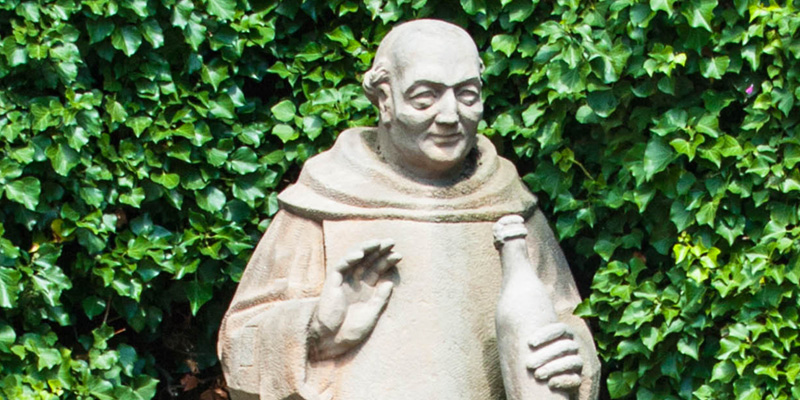If there’s any singular name that comes to mind when thinking about Champagne, it’s Dom Pérignon. The name itself has become synonymous with lavish lifestyles, luxury, and above all, delicious bubbly. So who exactly was the guy behind this elegant, modern-day effervescence? Believe it or not, he was much less lavish than his prestigious namesake bottle. In fact, he was a monk.
That’s right: Dom Pierre Pérignon was a French Benedictine monk. Born in 1638, Pérignon came from a family of eight children in the Champagne region of France, where his family owned a few vineyards. He studied in an abbey, then at a Jesuit college, and later ended up leading a monastery. After being transferred to a new abbey, he worked in the wine cellar. Thanks to his hard work, the abbey doubled its vineyard size.
But this remarkable monk is also credited with making essential improvements to the méthode champenoise wine-production style. This style of making wine came about when winemakers realized that it was possible to create bubbles through a secondary fermentation in the bottle, and that contrary to common belief, this was actually desirable. At the time, refermentation in bottle (how Champagne gets its sparkle) was seen as a huge problem among winemakers of the region. When spring temperatures would arrive, yeasts would come back to life and create abundant CO2 in the bottles, causing the bottle and various bottles around them to burst. Pérignon sought to avoid these explosions, studying how to ward off unwanted refermentation. He advocated for small crops, harvests in cool conditions, disposal of rotten grapes, and blending grapes before going to the press. He also pushed for practicing winemaking methods using naturally occurring processes.
While Pérignon was certainly not the first to make sparkling wine, nor the inventor of corks as some claim, his work was crucial to the perfection of the méthode champenoise process. Today, his namesake bottle is the “prestige cuvée” of Moet & Chandon. The winery where it’s made is the former monastery where he spent most of his life researching and cellaring.

